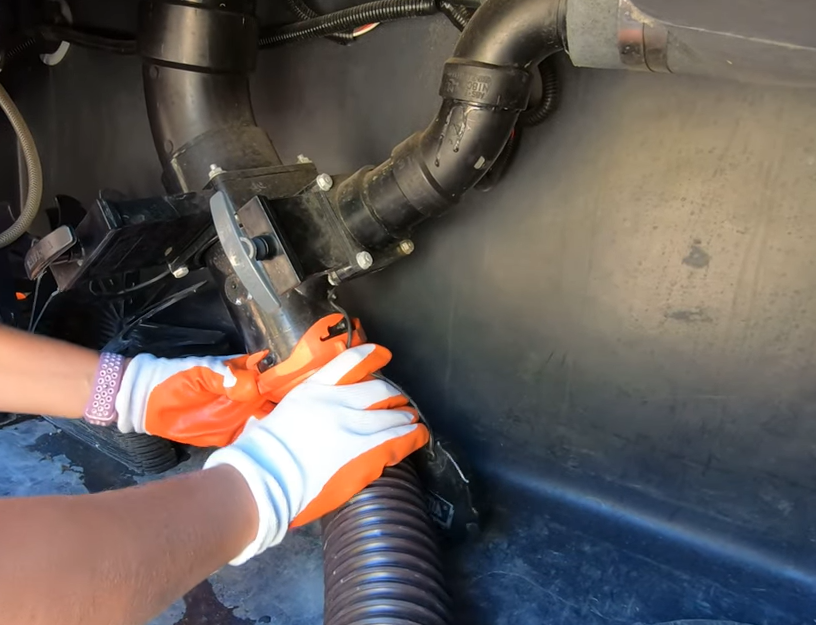
When it comes to RVing off-grid, one important aspect to consider is waste management. It’s essential to have a proper system in place to handle waste, whether it’s from the toilet, kitchen, or shower. In this article, we’ll explore how to set up a waste management system for your RV.
Black Water Tank
The first step in setting up your waste management system is to install a black water tank. This tank is designed to hold human waste and toilet paper, and it should be emptied regularly to prevent odors and backups. Most RVs come with a built-in black water tank, but if you’re retrofitting an older RV or building a DIY camper, you may need to install one yourself.
When installing a black water tank, it’s important to follow the manufacturer’s instructions carefully. The tank should be securely fastened to the RV’s frame, and all connections should be leak-proof. You’ll also need to install a vent pipe to prevent gas buildup and an RV toilet that’s compatible with the tank.
Gray Water Tank
In addition to a black water tank, you’ll also need a gray water tank to handle wastewater from the kitchen and shower. Gray water contains soap, grease, and other contaminants, so it’s important to dispose of it properly. Like the black water tank, the gray water tank should be securely mounted to the RV’s frame and connected to a vent pipe.
Dump Valves
Once you have your black and gray water tanks installed, you’ll need to connect them to dump valves for easy emptying. These valves are typically located on the underside of the RV and can be opened to release the waste into a designated dump station. Make sure to wear gloves and protective gear when handling the dump valves and hoses to prevent contamination.
Composting Toilets
If you’re looking for a more eco-friendly option for your RV waste management system, consider installing a composting toilet. Composting toilets use a natural process to break down human waste, turning it into a nutrient-rich soil that can be safely disposed of in nature. They don’t require any water or electricity, making them an ideal option for off-grid RVing.
Composting toilets come in a variety of styles, from self-contained units to larger models that require installation. They do require a bit of maintenance, including occasional emptying and adding composting material, but they’re generally easy to use and maintain.
Portable Holding Tanks
If you’re planning on camping in areas where dump stations aren’t available, you may want to consider using a portable holding tank. These tanks can be attached to your RV’s waste system and carried to a designated dump station when full. They come in a variety of sizes and can hold several days’ worth of waste.
When using a portable holding tank, it’s important to follow the manufacturer’s instructions carefully and dispose of the waste properly. Never dump wastewater on the ground or in a natural water source, as this can contaminate the environment and harm wildlife.
Setting up a waste management system for your RV is essential when RVing off-grid. Whether you choose a traditional black and gray water tank system or opt for a more eco-friendly composting toilet, make sure to follow all manufacturer’s instructions and dispose of waste properly to protect the environment and ensure a safe and enjoyable camping experience.